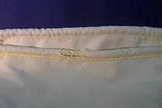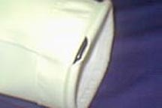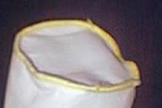Often our customers find it difficult to determine exactly what kind of Filter Media they require for their specific Dust collection system. Other times they know the particular type of filter media they need, but are unable to determine the exact size they need for their Baghouse.
To assist our customers, we at Baghouse.com have prepared this article to help you select the right filter media to match your specific needs.
If you would like to speak directly with one of our dust collection experts for additional help in selecting your Filter Media, or if you would like to receive a free Baghouse Filters quote, please call us at (702) 848-3990 or Contact Us using our online form.
Step 1 – Filter Media Selection
Choose the media from which your filter bags will be constructed of based on the type of application they will be used for. Take the following things into consideration prior to selecting your filter media:
• Temperature – Do your bags need to withstand extreme temperatures?
• Material – What is the filter being used for?
• Chemistry – Can your filter withstand the chemical makeup of the dust particles
• Resistance- Is the filter media able to resist the abrasion of the dust particles
Choosing the correct filter media is an important and sometimes difficult process. To assist you in the identification of the right media for your bags, keep the following in mind: Filter bag performance is directly related to how well it can tolerate the environment in which it is being used. How efficiently it can remove the dust particles from its fabric and its ability to be cleaned by the dust collector is also important. You must first learn to identify the type of filter media currently used in your application. Below you will find a list of typical construction methods:
• Woven felts
• Non-woven felts
• Natural fibers
• Synthetics (Thermoset or Thermoplastics such as Polypropylene “PPRO” – Polyphenylene sulfide “PPS” – Polyester “PE”)
For additional information on media types please examine our Filter Fabrics Chart below. A simple test to determine if a material is a thermoplastic is to take a small swatch and put a flame to it. A thermoplastic material will begin to melt when exposed to direct heat. The selection criterion eliminates materials based on temperature and chemical characteristics. The first cut is usually made based on temperature. Then the chemical characteristics of the gas stream are considered to further refine the search. Next, the efficiency of the material further dictates the construction of the material such as the weight, oz/sq. ft., fiber and surface treatments/membranes. Last but not least, if there are still two or more candidates it comes down to a price versus performance trade off.
Dust Collector Filter Fabrics
Popular Materials
Polyester Felt
Recommended continuous operation temperature: 275°F
Maximum (short time) operation temperature: 300°F
Supports combustion: Yes
Biological resistance (bacteria, mildew): No Effect
Resistance to alkalis: Fair
Resistance to mineral acids: Fair+
Resistance to organic acids: Fair
Resistance to oxidizing agents: Good
Resistance to organic solvents: Good
Available weights: 10 oz. – 22 oz.
Polypropylene Felt
Recommended continuous operation temperature: 190°F
Maximum (short time) operation temperature: 210°F
Supports combustion: Yes
Biological resistance (bacteria, mildew): Excellent
Resistance to alkalis: Excellent
Resistance to mineral acids: Excellent
Resistance to organic acids: Excellent
Resistance to oxidizing agents: Good
Resistance to organic solvents: Excellent
Available weights: 12 oz. – 18 oz
High Temperature Materials
Conex® / Nomex® Felt (Aramid)
Recommended continuous operation temperature: 400°F
Maximum (short time) operation temperature: 425°F
Supports combustion: No
Biological resistance (bacteria, mildew): No Effect
Resistance to alkalis: Good
Resistance to mineral acids: Fair
Resistance to organic acids: Fair+
Resistance to oxidizing agents: Poor
Resistance to organic solvents: Good
Available weights: 10 oz. – 22 oz.
P84® Felt Polyimide
Recommended continuous operation temperature: 475°F
Maximum (short time) operation temperature:500°F
Supports combustion: No
Biological resistance (bacteria, mildew): No Effect
Resistance to alkalis: Fair
Resistance to mineral acids: Good+
Resistance to organic acids: Good+
Resistance to oxidizing agents: Good+
Resistance to organic solvents: Excellent
Available weights: 14 oz. – 18 oz.
Ryton® Felt / PPS
Recommended continuous operation temperature: 375°F
Maximum (short time) operation temperature: 400°F
Supports combustion: No
Biological resistance (bacteria, mildew): No Effect
Resistance to alkalis: Excellent
Resistance to mineral acids: Excellent
Resistance to organic acids: Excellent
Resistance to oxidizing agents: Fair
Resistance to organic solvents: Excellent
Available weights: 16 oz. – 18 oz.
Dust Collector Filter Specialty Materials
Homopolymer Acrylic Felt
Recommended continuous operation temperature: 250°F
Maximum (short time) operation temperature: 275°F
Supports combustion: Yes
Biological resistance (bacteria, mildew): Good+
Resistance to alkalis: Fair
Resistance to mineral acids: Good+
Resistance to organic acids: Excellent
Resistance to oxidizing agents: Good
Resistance to organic solvents: Good+
Available weights: 15 oz. – 18 oz.
Epitropic Felt Antistatic
Recommended continuous operation temperature: 275°F
Maximum (short time) operation temperature: 300°F
Supports combustion: Yes
Biological resistance (bacteria, mildew): No Effect
Resistance to alkalis: Fair
Resistance to mineral acids: Fair+
Resistance to organic acids: Fair
Resistance to oxidizing agents: Good
Resistance to organic solvents: Good
Available weights: 14 oz. – 16 oz.
Step 2 – Dust Collector Filter Measurements
Accurate measurements lead to the best fit. It’s likely that your dust collector has been modified over the years due to permitting issues or changes in your process which called for a reconfiguration of the Baghouse. In this case OEM configurations will not fit and you will need to obtain accurate measurements for your filters before ordering replacement filter bags. If you currently have filter bags installed that are functioning properly, you can remove one of these bags to get the proper measurements for your replacement order. A spare bag that has not been used yet can also be measured if available. However, be sure to verify the bag measured is the same as the bags currently being used in the dust collector. If you are removing a used bag to measure, please be sure to use all necessary precautionary measures set in place prior to removal i.e. gloves, protective garments and respiratory equipment if needed. It is best not to rely only on the numbers off the unit of OEM filter specifications because of possible changes to the configurations. Of course the best solution is to mail the manufacturer a new or used bag that can be used a guide sample.
Flat Width: Place the filter on a flat surface such as a large table or cement floor. With the filter stretched out, press down on the side. Using a measuring tape, very accurately record the width. Be sure to hold the filter down firmly on an even surface when taking this measurement.
Diameter: When measuring the tube sheet hole of a pulse jet style dust collector, first make sure the hole has not been damaged or warped in any way. Clean the surface thoroughly with a wire brush then using a micrometer, measure the hole in both directions. If the measurements are at all different locate another hold and repeat this process.
Length: Remove the filter from the unit. Preferably with the assistance of another person, stretch the filter out. While maintaining tension on the filter record the length from the longest point at each end using a measuring tape. Do not include and straps, metal caps or other hanging hardware in the measurement, just the length of the filter itself.
Step 3 – Top & Bottom Construction
The top and bottom construction of a filter bag involves a variety of possible configurations. Identifying the type of cleaning process used by your dust collector will help to determine which configuration is needed. The most common types of dust collectors are “Pulse-Jet” “Shaker” “Reverse Air”. The chart below can help you identify which type of dust collector filter you are using.
Filter Configuration Chart
Pulse-Jet Dust Collectors (Reverse jet) – Found in almost every industrial environment. They are the most popular design and are seen in nearly all industry segments. Pulse-Jet Units can be divided into two major groups Top load or bottom load units sometime called top entry (walk-in plenum) or bottom entry (common in bin vents) because of the point of entry used to change out the filters.
Typical filter configuration for a top load unit:
Snap Band Top (double-beaded ring)
Disk Bottom (w/o wear strip)
Typical filter configuration for a bottom load unit:
Raw End Top
Disk Bottom (w/o wear strip)
Shaker Dust Collectors (Mechanical Cleaning) – Usually found in older applications where unscheduled down time is not a major concern.
Typical filter Top Configurations
Loop Top
Grommet Top
Strap or Tail Top
Metal Hanger or Cap
Typical Filter Bottom Configurations
Corded Cuff with Clamp
Snap Band (Double-Beaded Ring)
Reverse-Air Dust Collectors – Usually found in very large air handling environments such as power generation and cement plants although they do have uses in a variety of industries. Sometimes called a structural bag, these filters usually have a series of support rings spaced every few feet throughout the length of the bag.
Typical Top Configurations
Compression band w/Metal Cap & Hook
Typical Bottom Configurations
Compression band
Snap Band
Cord w/Metal Clamp
Step 4 – Additional Options
Ground Wires – Use to comply with Factory Mutual requirements for static dissipation. Ground wire can be made from stainless steel or copper however this technique only works on a localized area of the filter. For optimal static dissipation look at conductive fiber filter made with Epitropic or Stainless Steel fibers.
Wear Cuffs – Used to combat abrasion at the bottom of the bag either from a sandblasting effect or from bag-to-bag abrasion due to turbulence in the bag house. Usually 2 to 4 inches in length and made of a material similar to that of the body of the filter bag.
Special Finishes – There are many finish options that can be added to the filter media at the time it is manufactured. Please refer to the materials selection area for further details. If you want to order a specific brand or special type of finish please add that request into the additional comments section when ordering.
About the Author
| Dominick DalSanto is an Author & Environmental Technologies Expert, specializing in Dust Collection Systems. With nearly a decade of hands-on working experience in the industry, Dominick’s knowledge of the industry goes beyond a mere classroom education. He is currently serving as Online Marketing Director & Content Manager at Baghouse.com. His articles have been published not only on Baghouse.com , but also on other industry related blogs and sites. In his spare time, Dominick writes about travel and life abroad for various travel sites and blogs.



























